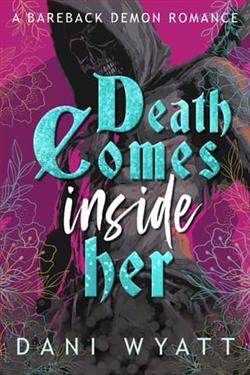Page 117 of The Only One Left
My hands go numb as I read the single sentence typed across the page. “What is this?”
“A copy of Mary Milton’s suicide note,” Detective Vick says. “I told you we found it with her body.”
I scan the page a second, third, fourth time, hoping each pass will produce a different meaning. But it all reads the same every damn time.
im sorry im not the person you thought i was
“Mary—” I stop, unnerved by the way my voice sounds. Like I’m underwater. Like I’m a thousand miles away. “Mary didn’t write this.”
“Of course she did,” Detective Vick says. “Who else could it be?”
Rather than answer, I struggle to jam the key into the ignition and struggle even more to pull out of the parking spot. Then I drive off, leaving Detective Vick standing in exhaust fumes, still ignorant to the fact that what he found with Mary’s body wasn’t a suicide note.
It’s something else.
Typed by someone else.
And I think I know exactly what it means.
THIRTY-SIX
Because I didn’t want to use the intercom to be let in upon my return, I never closed the front gate to Hope’s End behind me when I left. It’s still open, thank God, letting me steer the car right past it. I stop long enough to smack the button embedded in the interior wall to finally close the gate behind me. Then it’s back to the car, where I speed to the front door, cut the engine, and hurry inside. The house is unnervingly quiet as I sweep down the hallway, coming to a stop at the family portraits on the wall.
Pausing a moment at the painting of Lenora, I take in her pert nose, ripe lips, green eyes. Despite the many years between them, the girl in the portrait is unmistakably the woman I’ve been caring for.
I head to the first portrait in the row and use my car key to jab the silk crepe covering it. Once I’ve made a hole big enough to poke a finger through, I start clawing at the fabric. The silk crepe makes a tearing sound—slick, almost wet. I wonder if the knife blade sliding across Winston Hope’s throat made a similar noise.
That’s who’s underneath the fabric. Winston Hope himself, looking like every other captain of industry from that period. Ruddy and smug and pudgy from too much food, too much wine, too much everything. Men like him gobbled up all they could, leaving nothing for everyone else.
Staring at the greedy visage of Winston Hope, I can tell he hadno idea what fate had in store for him. He probably thought he’d live forever. Instead, he ended up dead in the room just across the hall, slumped over a pool table, his blood seeping into the green felt.
I move on to the next portrait, repeating my steps. Jab, poke, claw, tear. The black fabric pulls away to reveal Evangeline Hope. She truly was beautiful. Lenora hadn’t lied about that. Alabaster skin. Golden hair. Slim, elegant frame draped in an equally slim and elegant gown. But for all the ethereal beauty on display, there’s something not right about Mrs. Hope’s appearance. She’s disconcertingly pale, making her seem delicate and fragile. I look at her and am reminded of a daylily on the cusp of wilting.
Unlike her husband, Evangeline Hope looks very much like she knew what was coming.
There’s only one portrait left.
Virginia.
I jab and poke. I claw and tear. I keep ripping until I see a young woman who bears some of the features of her mother and absolutely none of her father. She’s beautiful, too, in a slightly haughty way. In the painting, her smile comes off as forced, almost cruel. Then there are her eyes, which are colored an icy blue. Staring at them makes me recall what Berniece Mayhew said about Ricardo being a goner once Lenora batted her big eyes at him.
Her big,blueeyes.
Both my heart and mind race as I rush into the library, zeroing in on the fireplace mantel, where those three unsettling urns sit.
Father, mother, daughter.
With trembling hands, I reach out and lift the lid from the urn on the left.
Inside is a pile of dull gray powder that brings to mind something the priest said during my mother’s funeral.
Ashes to ashes, dust to dust.
Both are present and accounted for inside the urn, shifting like sand as I set it back on the mantel and replace the lid.
I grab the second urn, lift the lid, take a peek at more ashes.
Then it’s on to the third urn, where my movements seem to slow like a bad memory. Seconds stretch to minutes as my fingers touch the lid, lift it, set it aside on the mantel. My senses work overtime when I grasp the urn.















